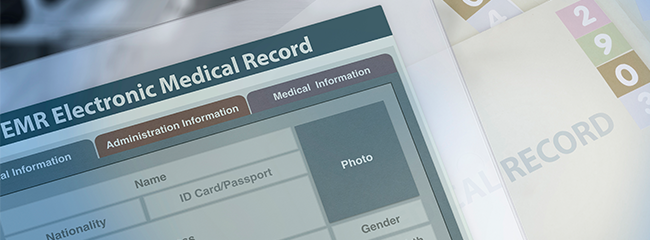Written by Matthew Streff, Manager - Professional Services, FlexButton - iatricSystems

In the world of clinical relationships, the EHR might be your number one frenemy. You can try to play nice together, but there’s a fundamental dislike for this system when it all boils down. But don’t worry, you’re not alone.
The transition from paper to modern, electronic health records (EHRs) was revolutionary in the sense to be able to pull so much data. However, along with it came challenges supporting clinical workflows and making sense of all this information, and delivering safe, efficient and effective care.
Today’s healthcare professionals lack a complete view of patient health information. The only way to get even a portion of the picture is to toggle between systems and screens, on the hunt for information to help them help their patients. Doing so means they’re spending more time in the EHR and less time face-to-face with patients – and physician burnout looming on the horizon.
Healthcare admins can’t ignore the impact technology has on their clinicians – the good and the bad. In this blog, we will unpack the link between EHRs and physician burnout and offer up a potential solution with redefining system connectivity.
Physician burnout and the EHR – An undeniable link
According to a recent study, physician burnout has been correlated to EHR inboxes flooded with tasks, messages, and documents to review. The study found that receiving more than the average number of system-generated in-basket messages was associated with a 40% higher probability of burnout and a 38% high probability of intending to reduce clinical work time. Additionally, researchers analyzed EHR log data to understand the distribution of work time of 471 primary care physicians and found that over 50% of their time is spent on desktop medicine tasks.
Tedious mouse-clicks and the endless back-and-forth between systems to get the information to provide proper care builds a mountain of frustration that snowballs into burnout that impacts the hospital and, more importantly, the patients.
Burnout has become so prevalent that healthcare humorists like Brad Nieder, MD,CSP, are hosting keynote sessions to engage and uplift viewers with real strategies to prevent burnout, improve work-life balance, and bring joy to their patients. You can hear from Brad Nieder at our upcoming virtual event on October 27 and 28, the iatricSystems Fall Exchange. Register here.
EHR challenges drive system connectivity solutions
The quantity of available data is overwhelming. Additionally, the collaboration between care teams is necessary to improve patient care, yet data is often stored in siloed systems making it more challenging to get an updated patient view. Clinicians don’t need more data; they need the information to be presented in a more readable and ingestible manner.
One way to improve clinicians’ workflow is being able to alert clinicians within their existing EHR to relevant patient data that resides in other systems. The goal is to have a system that surfaces critical data, makes it actionable and breaks down barriers between disparate systems – and that’s what FlexButton™ from iatricSystems comes in.
How FlexButton can help
FlexButton is just as its name implies – it’s flexible, so you can use it to automatically deliver vital patient information to your caregivers and staff when and where they need it. It’s designed to improve clinician workflows and lower the rate of physician burnout by giving access to data in other systems faster, decreasing time spent searching for patient data.
Fermin Barrueto Jr, MD, and Senior Vice President at University of Maryland Upper Chesapeake Health System shared his experience with FlexButton, stating, “Receiving care alerts via FlexButton will help us coordinate care from a variety of different specialties, from social workers to other clinicians. And specialists will be able to place care alerts in a real-time basis and allow us to improve the overall coordination of care for our patients, which is going to lead to better clinical outcomes.”
We must remember that in order to provide better patient care, we need to make sure our clinicians have the tools they need to not only do their job but to make it easier too. Physician burnout won’t be solved overnight – there are many factors – but looking at the clinician’s workflow is a great place to start.
If you’d like to learn more about FlexButton, we invite you to check out this year’s Fall Exchange. We’ll not only have a session dedicated to FlexButton, but there’s also an entire learning and educational track devoted to improving the day-to-day for your clinicians. Check out the full agenda.
You can also reach out to info@iatric.com to schedule a meeting to learn how we can help you support your clinical team.